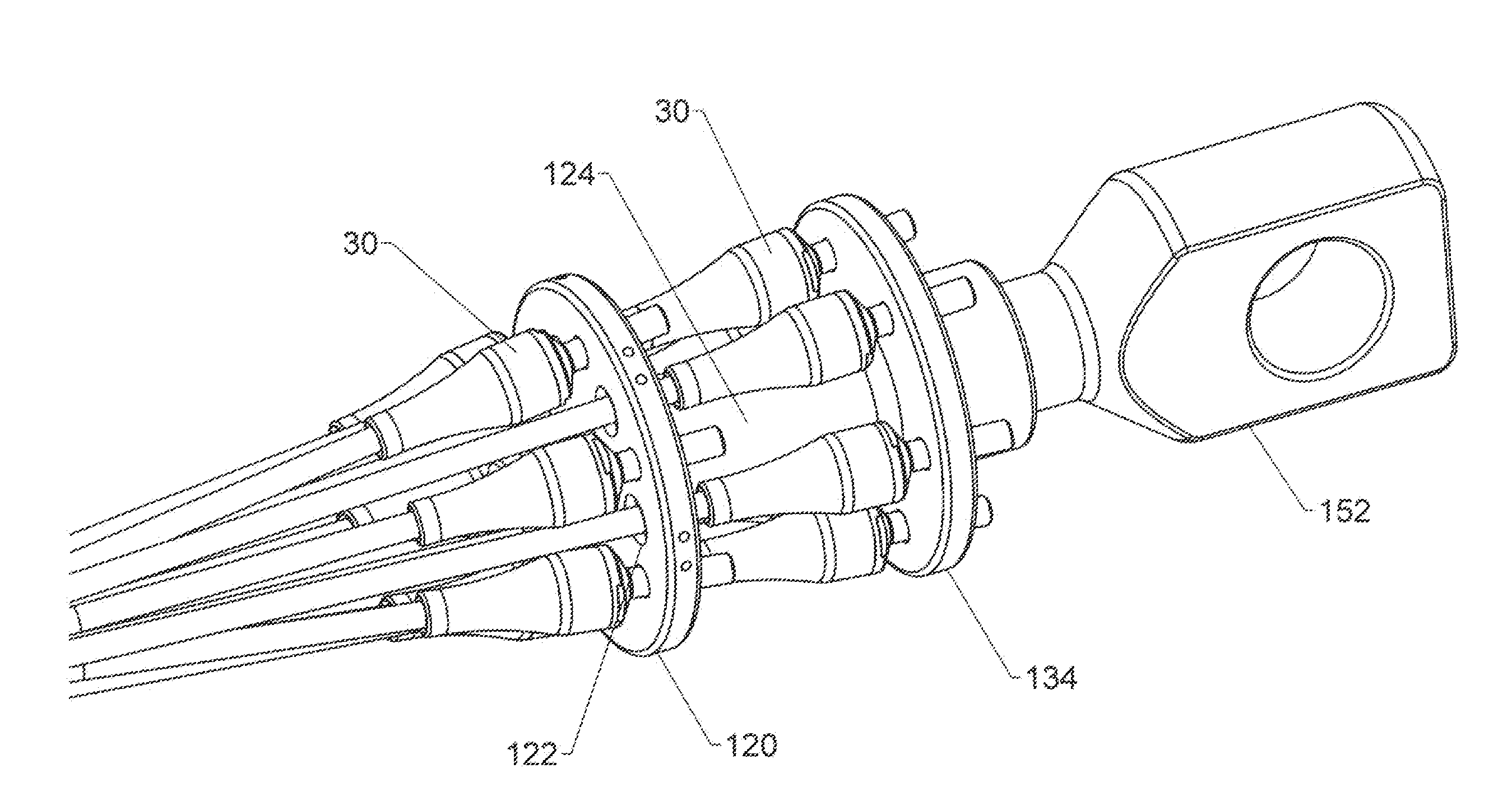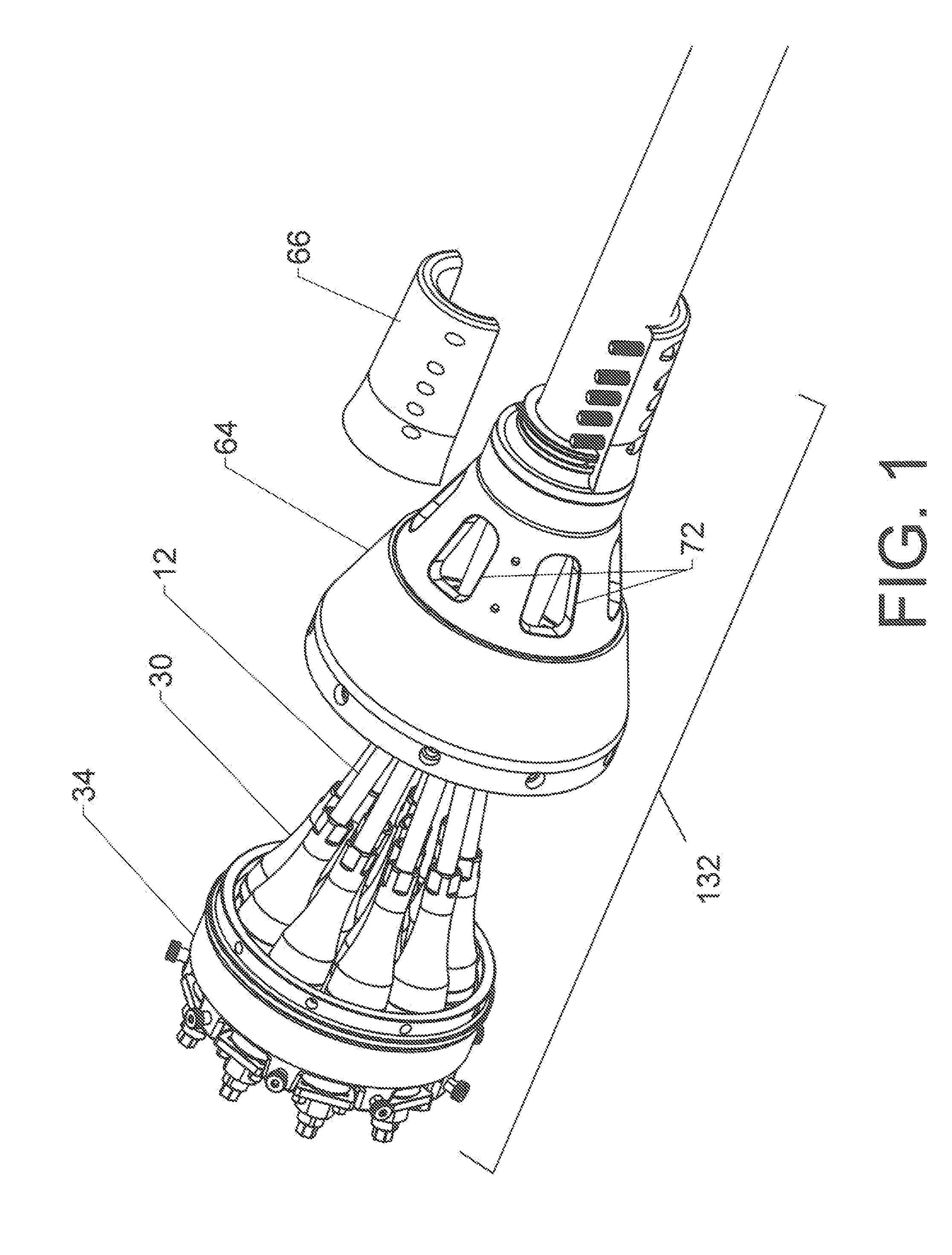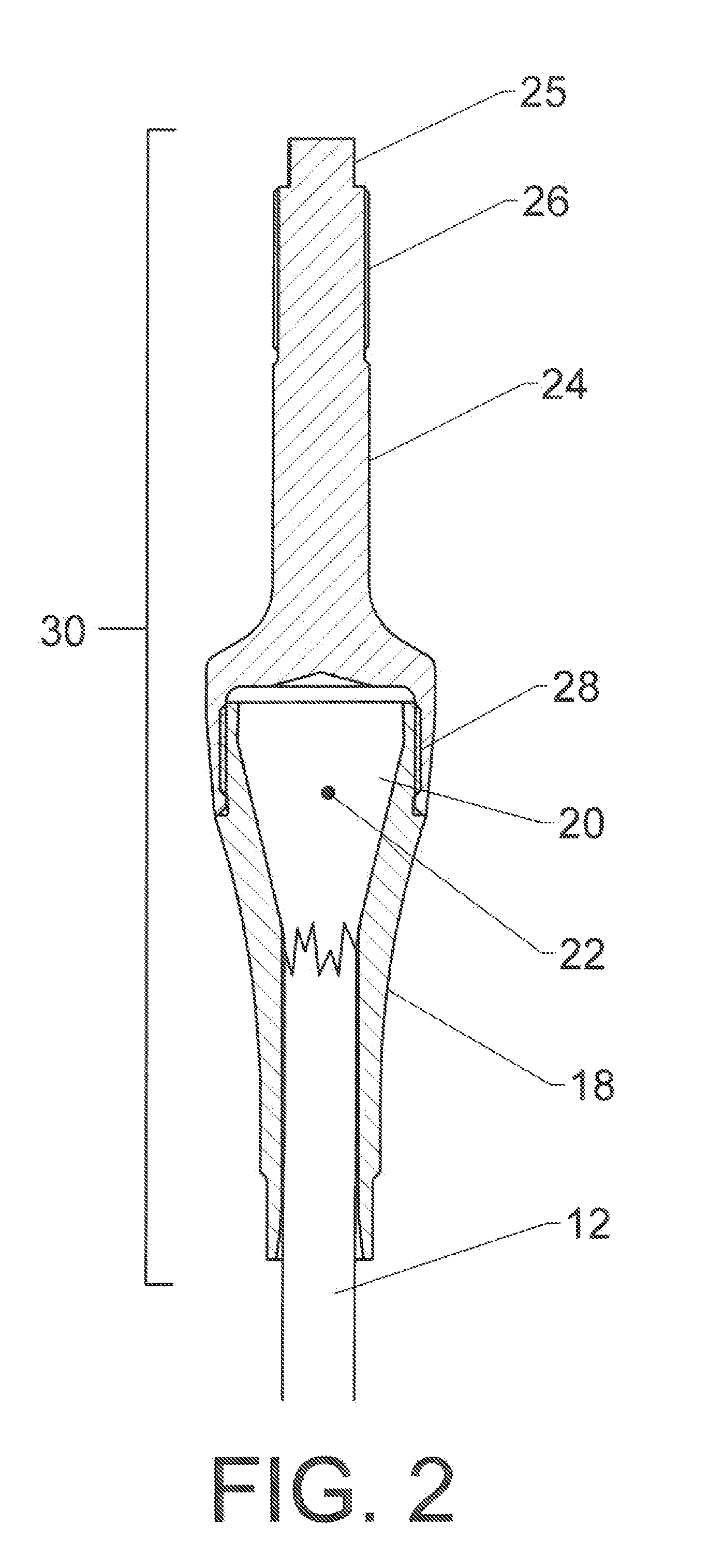Advanced Stranded Cable Termination Methods and Designs
a technology of stranded cables and termination methods, applied in the direction of cables, belts/chains/gearings, mechanical equipment, etc., can solve the problems of difficult organization, low efficiency, and difficult handling of synthetic filaments, and achieve the effect of shortening the length required
- Summary
- Abstract
- Description
- Claims
- Application Information
AI Technical Summary
Benefits of technology
Problems solved by technology
Method used
Image
Examples
example one
12 Strand
[0096]Synthetic cables having twelve individual strands are common. When braided, this construction includes six strands helically wound in a first direction and six strands helically woven in the opposite direction. The two groups are interwoven. Twelve strand cables are also made with parallel strands.
[0097]Several different strand groupings are possible for a twelve strand cable. The first variation will be referred to as a “12×1 collection pattern.” This groups the 12 strands in a circular cross section. This design aligns both “S” and “Z” twist strands and matches the natural construction (which is a hollow circle). The “12×1” structure is highly balanced but does tend to produce a fairly large expansion in cross-section as the strand terminations are added and the connections to the collector are made.
[0098]The second variation will be referred to as a “9×3 collection pattern.” This arrangement includes three “core” strands in the center and nine outer strands. This c...
example two
8 Strand
[0101]Synthetic cables having eight strands are also common. When braided, this construction includes four strands helically wound in a first direction and four strands helically wound in the opposite direction. The strands are braided together. Eight-stranded cables having a parallel construction are also known. Whether braided or parallel, several idealized strand groupings are possible for such a cable.
[0102]The first variation will be referred to as an “8× collection pattern” which includes eight strands in a circular cross section. The second variation will be referred to as a “5×3 collection pattern” which wraps five outer strands around a core group of three strands. The third variation is a “4×4 collection pattern” in which two sub-groups of four strands each are created. The anticipated benefits for each of these collection pattern are generally the same as those described previously for the twelve strand variations.
[0103]This disclosure encompasses several differen...
PUM
 Login to View More
Login to View More Abstract
Description
Claims
Application Information
 Login to View More
Login to View More - R&D
- Intellectual Property
- Life Sciences
- Materials
- Tech Scout
- Unparalleled Data Quality
- Higher Quality Content
- 60% Fewer Hallucinations
Browse by: Latest US Patents, China's latest patents, Technical Efficacy Thesaurus, Application Domain, Technology Topic, Popular Technical Reports.
© 2025 PatSnap. All rights reserved.Legal|Privacy policy|Modern Slavery Act Transparency Statement|Sitemap|About US| Contact US: help@patsnap.com



